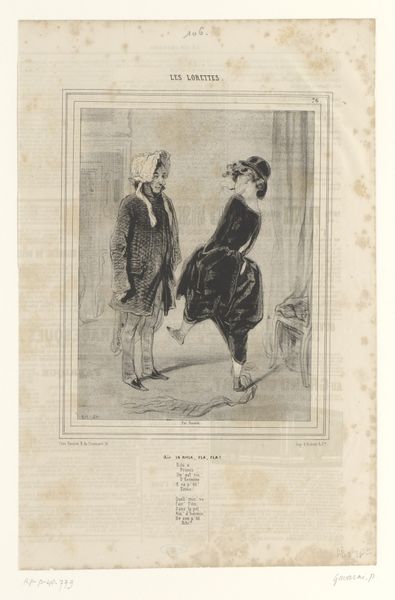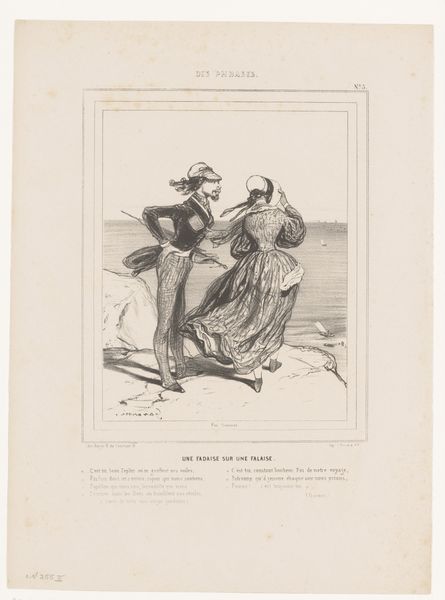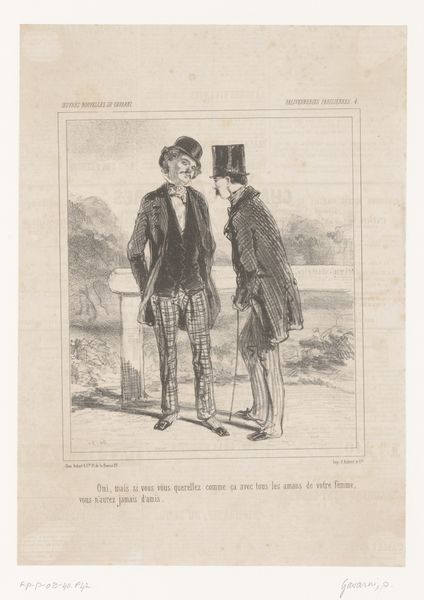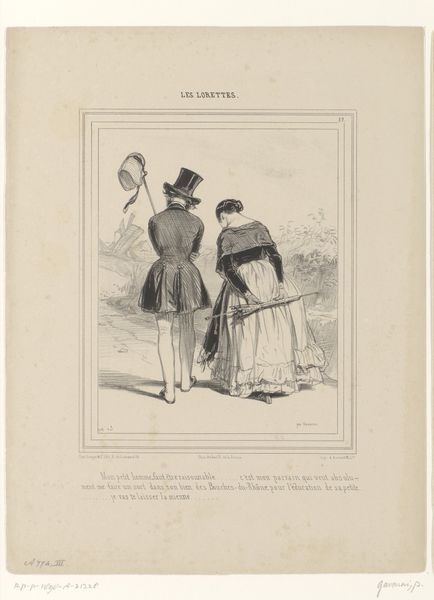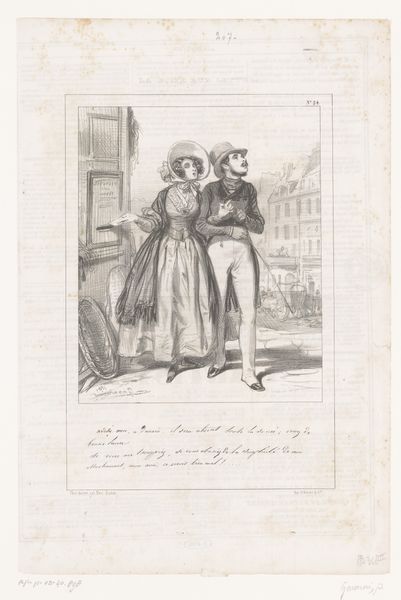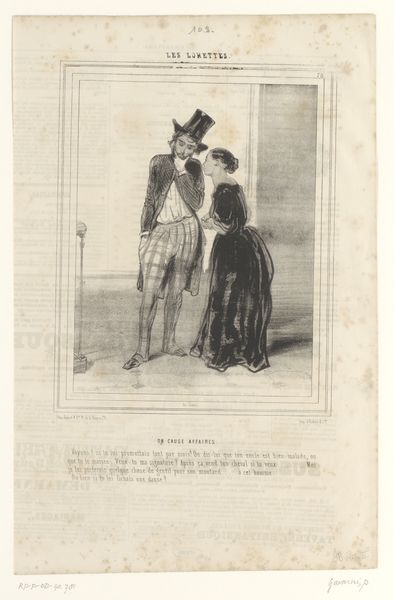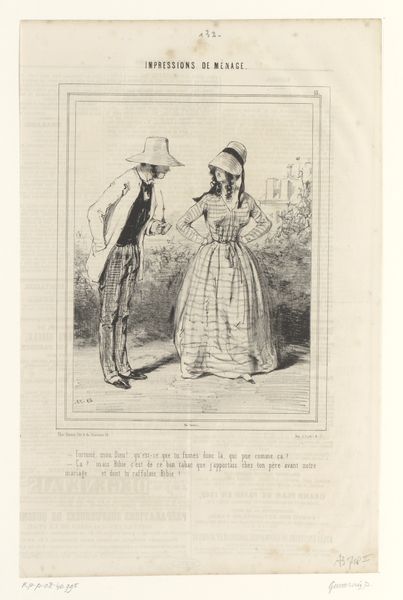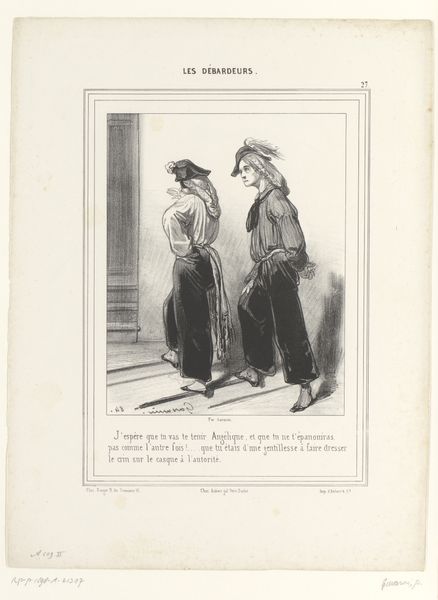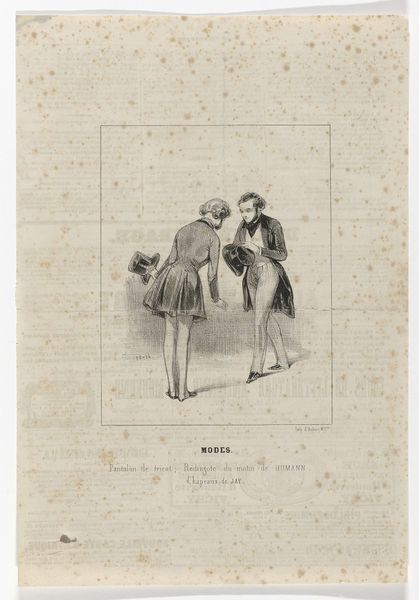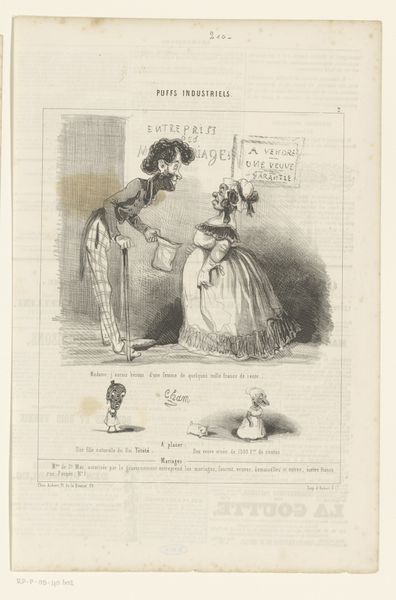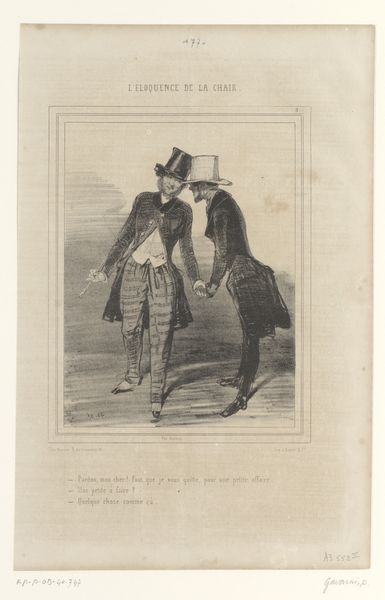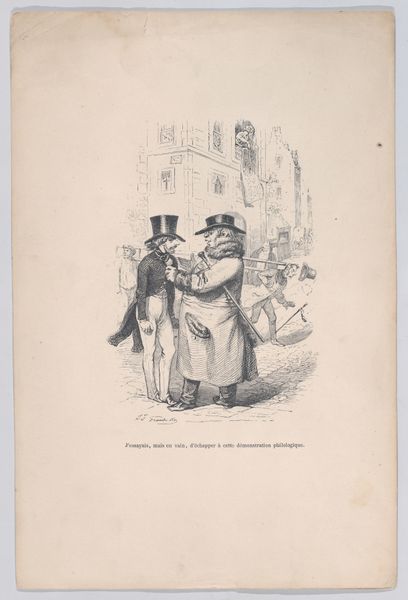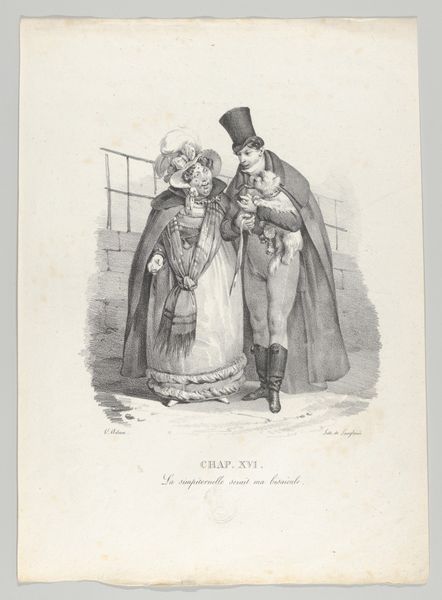
drawing, ink, pen
#
portrait
#
drawing
#
caricature
#
ink
#
pen
#
genre-painting
Dimensions: height 275 mm, width 215 mm
Copyright: Rijks Museum: Open Domain
Curator: Let’s talk about this intriguing drawing, "Spotprent op Minister van Oorlog Van Mulken," created by Johan Michaël Schmidt Crans in 1870, using pen and ink. What strikes you initially? Editor: Gosh, the immediate vibe is satirical, wouldn't you say? The Minister is so stout! There’s this bulbous shape, like he’s about to topple over, and that lady, they just don't match do they? Their styles that is...the crosshatching gives it all this lively energy. It’s charmingly biting. Curator: Indeed! Crans was clearly commenting on the political climate through caricature. The medium of pen and ink was crucial for widespread dissemination. This work likely appeared in a newspaper or pamphlet. Notice how the lines, rendered in ink, define not only form, but also the perceived "weight" – literal and figurative – of Van Mulken's position. Consider the social impact a piece like this could have had, stirring public sentiment with each glance. Editor: I'm loving how he captures that absurdity! The whole scene is staged; the conversation bubbles in your head like an actor speaking, maybe it captures this feeling of government distance from regular people and social concerns? Curator: That’s astute! The artist employed specific material techniques—the fineness of the pen line for detail, the density of the ink for shadow and emphasis—to amplify a message about the imbalance of power. These choices ensured that his commentary would be readily consumed by a wide audience. The print could easily be reproduced and spread throughout the city. Editor: It makes you wonder, doesn't it, about how artists wield seemingly simple tools – a pen, ink, paper – to create ripples in public opinion? And that, for me, is eternally fascinating, what tools do we choose to tell our stories today? Curator: Absolutely. Analyzing the work through its materials and distribution sheds light on its role in shaping historical discourse. Thanks for sharing your fresh perspective. Editor: Thank you. Considering process really helped bring this image to life for me!
Comments
No comments
Be the first to comment and join the conversation on the ultimate creative platform.
